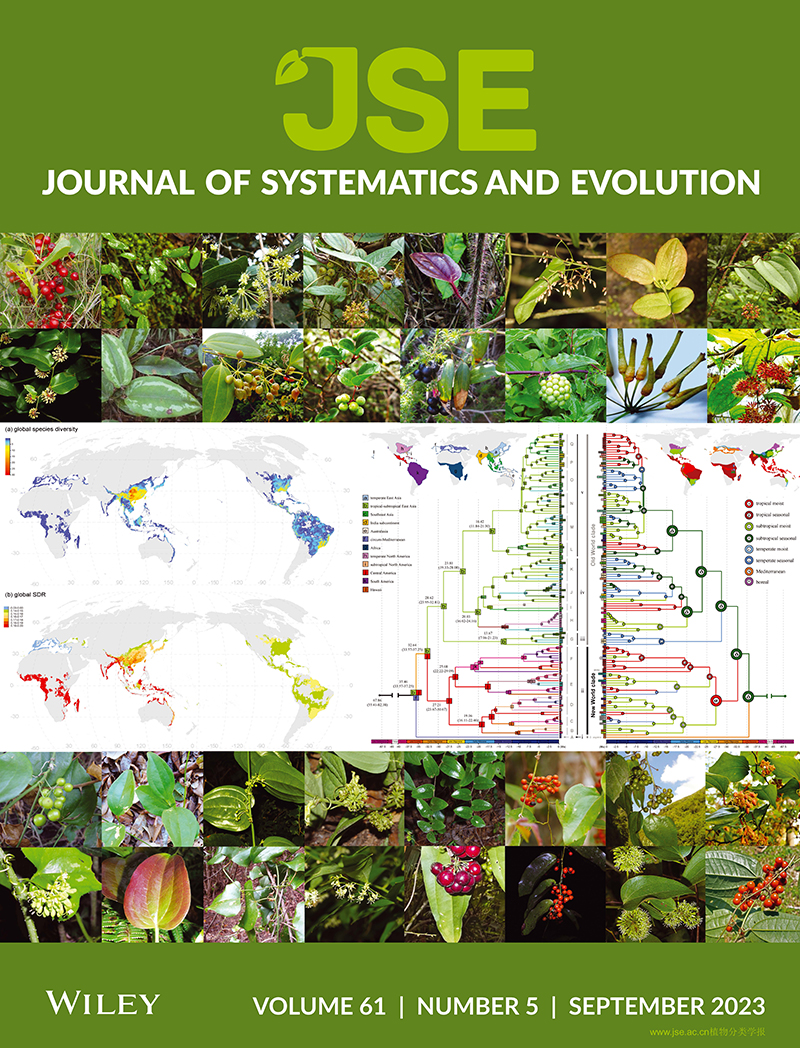Table of Contents
-

Volume 61 Issue 5
Cover illustration: The middle image shows the global species diversity and diversification rate patterns of Smilacaceae on the left, and the ancestral area and trait evolution of the family on the right. See figure 1 and figure S9 of the article by Qi et al., pp.733-747 in this issue, for details. The top and bottom photos are Smilax species from the Old World and the New World, respectively. Photos by Pan Li, Cheng-Xin Fu, Zhe-Chen Qi, Bernard Dupont, Bruce Gray, Canek Ledesma, and Andrés Hernández. Designed by Zhe-Chen Qi, Pan Li, and Cheng-Xin Fu. [Detail] ...
Editors-in-Chief
Song Ge
Jun Wen
Song Ge
Jun Wen
Impact Factor
3.7
JCR 2022 IF ranking: 60/238 (Plant Sciences, top 25%, Q2 quartile)
Journal Abbreviation: J Syst Evol
CN: 11-5779/Q
Frequency: Bi-monthly
Journal Abbreviation: J Syst Evol
| ISSN: | 1674-4918 (Print) 1759-6831 (Online) |
Frequency: Bi-monthly

Scan to view the journal on your mobile
device
device

Scan to follow us on WeChat







